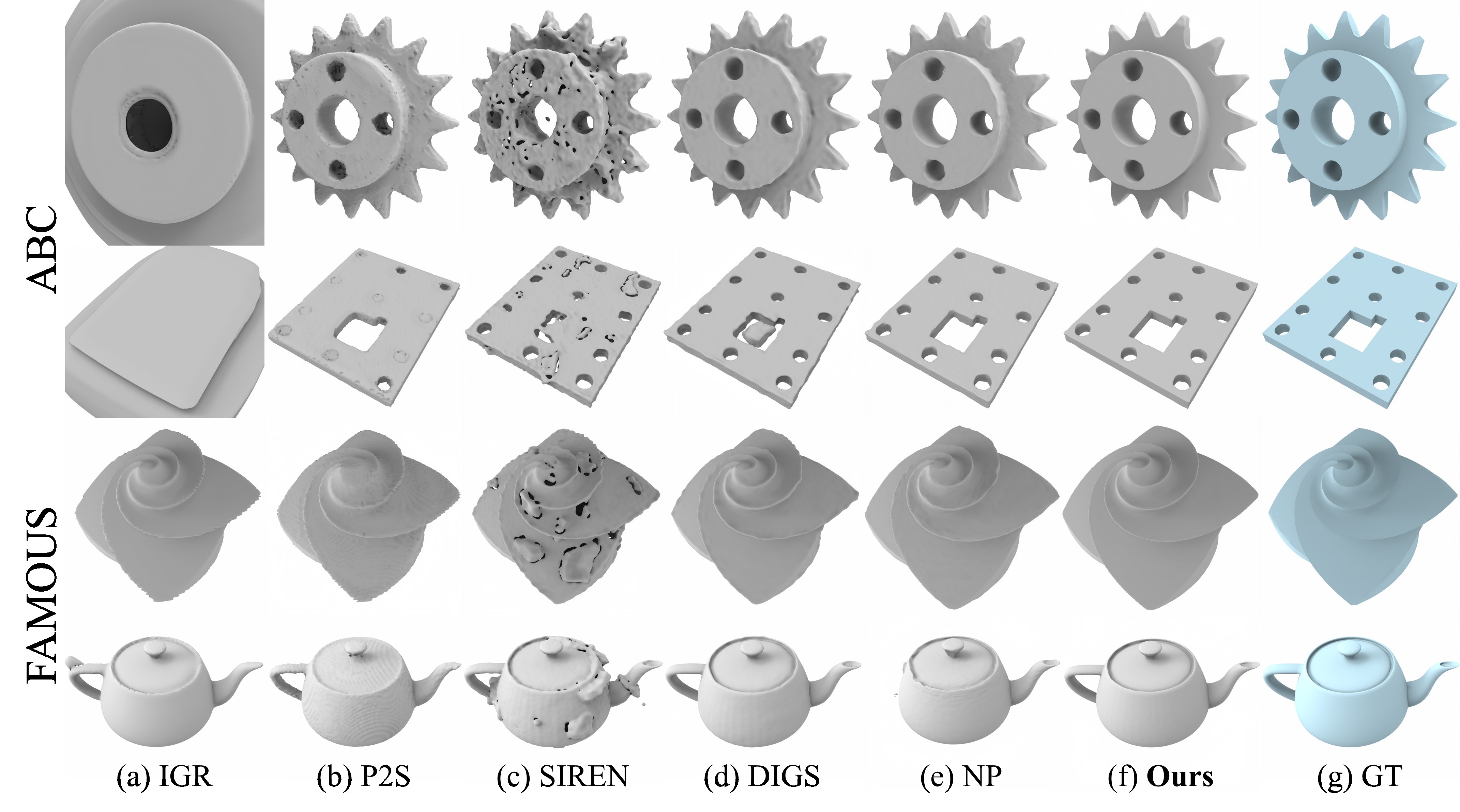

Neural signed distance functions (SDFs) have shown powerful ability in fitting the shape geometry. However, inferring continuous signed distance fields from discrete unoriented point clouds still remains a challenge. The neural network typically fits the shape with a rough surface and omits fine-grained geometric details such as shape edges and corners. In this paper, we propose a novel non-linear implicit filter to smooth the implicit field while preserving high-frequency geometry details. Our novelty lies in that we can filter the surface (zero level set) by the neighbor input points with gradients of the signed distance field. By moving the input raw point clouds along the gradient, our proposed implicit filtering can be extended to non-zero level sets to keep the promise consistency between different level sets, which consequently results in a better regularization of the zero level set. We conduct comprehensive experiments in surface reconstruction from objects and complex scene point clouds, the numerical and visual comparisons demonstrate our improvements over the state-of-the-art methods under the widely used benchmarks.

Overview of filtering the zero level set. (a) We assume all input points lying on the surface and compute gradients as normals. (b) Calculating bidirectional projection distances \(d1=|n_{p_j}^T({\bar{p}} - {p}_j)|\), \(d2 = |n_{\bar{p}}^T(\bar{p} - p_j)|\) and the weights in Eq. (4). (c) By minimizing Eq. (4), we can remove the noise on the zero level set. The gradient \(∇f_θ\) in this figure defaults to be regularized.

Overview of sampling points. (a) Sampling query points near the surface. (b) Pulling the query point to the zero level set and input points to the level set where the query point is located. (c) Applying the filter on each level set. The gradient \(∇f_θ\) in this figure defaults to be regularized.



|
|
|
|
@ARTICLE{I-Filteringpami,
title={I-Filtering: Implicit Filtering for Learning Neural Distance Functions from 3D Point Clouds},
author={Li, Shengtao and Liu, Yudong and Gao, Ge and Gu, Ming and Liu, Yu-Shen},
journal={IEEE Transactions on Pattern Analysis and Machine Intelligence},
year={2025},
}
@inproceedings{ImplicitFilter,
title={Implicit filtering for learning neural signed distance functions from 3D point clouds},
author={Li, Shengtao and Gao, Ge and Liu, Yudong and Gu, Ming and Liu, Yu-Shen},
booktitle={European Conference on Computer Vision},
pages={234--251},
year={2024}
}